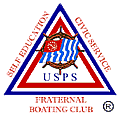
Education
|
Safety
|
Activities
|
Boating Links
|
USPS National
|
Contact us
|
MEMBER COURSES are divided into three types - Advanced Grades, Electives and Learning Guides. The advanced grades are designed to be taken in sequence after Boating, beginning with Seamanship and progressing through Piloting, Advanced Piloting, Junior Navigation, and Navigation.
ADVANCED GRADE COURSES
Seamanship (S): Building on the basics taught in the Boating Course, Seamanship is the recommended first course for new members, both power boaters and sailors. Students learn practical marlinespike; navigation rules; hull design and performance; duties of the skipper; boat care; operating a boat under normal and abnormal conditions; what to do in various emergencies and weather conditions; nautical customs; and common courtesy on the water.
Piloting (P): This is the first of a two-part program studying inland and coastal navigation. It focuses on the fundamentals of piloting - keeping track of a boat’s movements, determining your position at any time and laying out courses to a planned destination. Included are such subjects as: charts and their use; aids to navigation; the mariner’s compass; variation and deviation of the compass; plotting and steering courses; dead reckoning; and plotting and labeling charts.
Advanced Piloting (AP): This is the final part of the inland and coastal navigation series. It emphasizes the use of modern electronic navigation systems and other advanced techniques for finding position. Among topics covered are: tides and currents and their effects on piloting; finding position using bearings and angles; simple use of the mariner’s sextant; and electronic navigation - radar, loran, GPS, etc.
Junior Navigation (JN): This is the first of a two-part program of study in offshore (open-coast) navigation. It is designed as a practical, how-to course, leaving the theoretical and more advanced techniques for the Navigation Course. Subject matter includes: basic concepts of celestial navigation; how to use the mariner’s sextant to take sights of the sun, moon, planets and stars; the importance and techniques of accurate time determination; use of the Nautical Almanac; how to reduce sights to establish lines of position (LOPs); and the use of special charts, plotting sheets and other navigational data for offshore positioning and passage planning.
Navigation (N): This is the second part of the study of offshore navigation. It further develops the student’s understanding of celestial theory. The student is introduced to additional sight reduction techniques and develops greater skill and precision in sight taking, positioning and the orderly methods of carrying on the day’s work of a navigator at sea. Included is lifeboat-navigation, using minimal data or equipment.
ELECTIVE COURSES
Engine Maintenance (EM): This course deals with basic design and construction, operating principles maintenance and repair of gasoline and diesel engines. Various systems - fuel, electrical, cooling and lubrication - are studied. The purpose of this course is to make the student more resourceful - not a mechanic.
Sail (SA): This course teaches terminology, types of rigs and hulls, signals and rules of the road, theory of sailing, balance of hull and sails, stability, true and apparent wind, points of sailing, handling, anchoring, mooring, and docking, laying up and fitting out.
Marine Electronics (ME): This course contains essential knowledge about a boat’s electrical and electronic systems, including wiring, grounding, electrolysis, batteries and their care. Also covered are depth finders, marine radio telephones, radar, Loran, GPS, and other electronic positioning systems.
Weather (W): This course teaches an awareness of weather phenomena, how to read a weather map and the sky, and how to understand and anticipate weather developments. The atmosphere and its characteristics; global weather and other factors that affect forecasting are studied as well as clouds, air masses, fronts, storms and fog.
Cruise Planning (CP): This course encompasses the data from all of the courses as applied to planning for and actually going on a cruise. Topics include equipping a cruising boat; selecting the crew; provisioning; managing a voyage; clearing foreign ports; emergencies afloat; and security measures.
LEARNING GUIDES
In addition to the above instructed courses, members may study topics in self study programs. They range from Knots, Bends, and Hitches through Compass Adjusting, Amateur Radio, Skipper Saver, and Navigational Astronomy.
